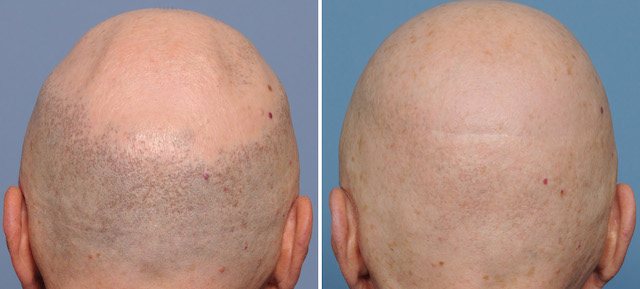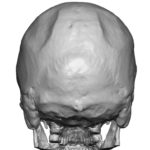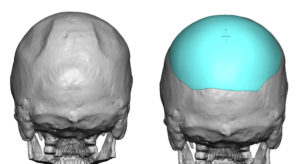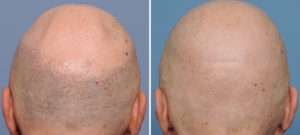Background: The shape of the skull is affected by many factors from in utero development to after birth external molding influences. This can result in non-smooth surfaces and irregular convex skull contours. While most people have an intimate knowledge about the shape of their skull, usually by feel, when it becomes exposed as can occur in some men with lack/loss of hair coverage it becomes more visible to all.
Skull irregularities can be the result of high or low surface contour issues. In my experience skull contours issues are equally split between specific high areas (e.g., sagittal crest, occipital knob) as well as specific lower/flat areas. (e.g. occipital plagiocephaly, sloped forehead) But surface shape issues that do not correspond to suture lines or specific skull bones are very uncommon.
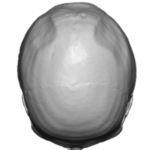
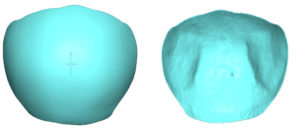
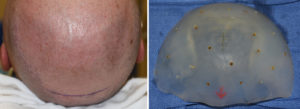
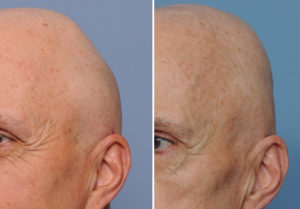
Camouflaging bony skull irregularities often require covering surface areas well beyond where the actual defects are. With the goal of an overall smoother scalp appearance and to prevent the risk of visible or palpable implant edges that can come from trying to ‘patch’ individual defects, larger implant designs may be needed.
Case Highlights:
1) Skull indentations can occur for different reasons but when they occur in a bilateral and symmetric fashion they are congenital in origin.
2) To get an accurate fit through a small scalp incision bilateral skull indentations should be treated by a single implant that covers a brow surface area.
3) Long term followup of a custom skull implant for indentation shows good contour restoration and a well healed fine line scalp scar.
Dr. Barry Eppley
Indianapolis, Indiana

